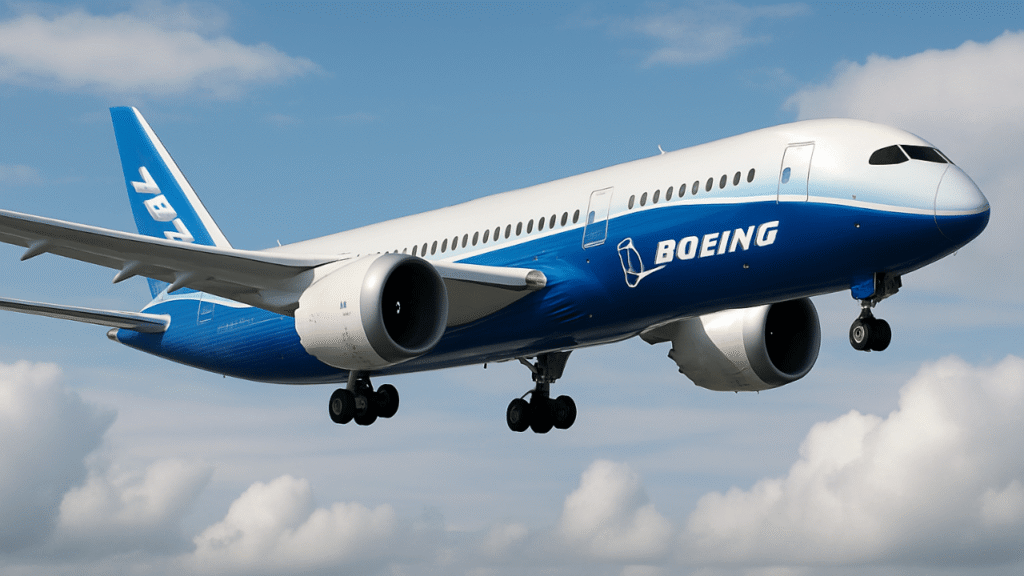In the past few years, Boeing aircraft—especially those operated by Air India—have made headlines for alarming technical failures, emergency landings, and near-disasters. While these incidents appear isolated, a closer look suggests something far more sinister: a pattern of negligence, cover-ups, and systemic regulatory failure.
This article uncovers the dangerous truth behind Boeing’s safety cover-up —one that questions not only the safety of its aircraft but also the global aviation oversight that enables it.
Five Days, Five Technical Failures—Mostly Boeing
In June 2025 alone, five technical failures were reported in India involving Boeing aircraft. Cases included:
- Emergency landings due to landing gear issues
- Mid-air engine warnings
- Flights being turned back shortly after takeoff
Out of the eight major technical issues reported in that week, six were linked to Boeing aircraft, and only two to Airbus. Many of these incidents involved Air India’s fleet, raising questions about aircraft quality and maintenance.
A Deadly Boeing History vs. Airbus in India
A deeper analysis of fatal crashes in India since the 1980s reveals:
- 7 out of 8 fatal air crashes in India involved Boeing planes
- Only 1 involved Airbus
- Post-2000 (the era of modern aviation), Air India and Boeing were linked to three major fatal accidents—Airbus to none
This isn’t just bad luck. It suggests a disturbing pattern of design flaws, cost-cutting, and overlooked safety protocols.
Regulatory Failure: Is DGCA Doing Enough?
India’s aviation regulator, the DGCA (Directorate General of Civil Aviation), claims improved safety ratings—from 59% in 2014 to 85% in recent evaluations. But aviation experts argue this is largely on paper.
Veteran safety analyst Capt. Mohan Ranganathan alleges:
- DGCA is influenced by airline companies
- Safety features like optional safety systems are not made mandatory
- Airlines bypass costs by choosing lower safety compliance
In the U.S. and Europe, safety violations result in heavy penalties and government audits. In India, DGCA’s maximum fine is ₹1 crore, while aircraft companies earn ₹100+ crores daily.
Maintenance Negligence and Fake Compliance
Air India has long been accused of flying planes with:
- Faulty parts
- Unfixed defects known in advance
- Fake safety compliance reports
In 2022, Air India Express flight narrowly avoided disaster after flying with a damaged engine. Internal records showed the airline knew about the problem 6 days in advance, yet flew the aircraft due to a “tight schedule.”
The Chief Safety Officer who filed fake compliance reports was merely suspended for one month and later reinstated.
Fatigued Pilots and Exploited Staff
Multiple fatal crashes worldwide—from India to the U.S. and Korea—have been linked to pilot fatigue. A survey in India showed:
- Pilots often fly 13-hour shifts
- Undergo back-to-back night flights
- Suffer from sleep deprivation
Even after public protests, DGCA’s mandatory rest period of 48 hours was repeatedly delayed due to airline lobbying.
Boeing’s Manufacturing Philosophy: Profit Over Safety?
After merging with McDonnell Douglas in the late 1990s, Boeing allegedly shifted focus:
- Engineers were replaced by cost-driven executives
- Quality control was outsourced
- Speed and profit were prioritized over safety
Whistleblowers like John Barnett, a quality manager at Boeing, revealed:
- Oxygen systems missing 1 in 4 masks
- Metal shavings near electrical wiring
- Internal pressure to approve faulty components
Barnett was found dead in 2024 under suspicious circumstances.
The 787 Dreamliner Debacle
The Boeing 787, once called the “safest aircraft,” was grounded in several countries after:
- Battery fires
- Fuel leaks
- Electrical failures
Even Boeing advised India not to fly the 787 in thunderstorms due to engine freezing issues, yet no decisive action was taken by Indian regulators.
The MAX 737 Scandal: A Global Wake-Up Call
Boeing secretly installed the MCAS software to fix a design flaw in the MAX 737 without informing the FAA or pilots. This software led to two major crashes:
- Lion Air (2018)
- Ethiopian Airlines (2019)
Both involved automatic nose dives that pilots couldn’t stop. Over 350 lives were lost.
The U.S. fined Boeing $2.5 billion, but the revenue from these aircraft was over $150 billion—a slap on the wrist compared to the lives lost.
India’s Oversight Crisis: Who’s Investigating Whom?
In most countries, air crashes are investigated by independent agencies (like NTSB in the U.S.). In India, DGCA—the same agency that licenses and regulates airlines—leads investigations.
This creates a conflict of interest, allowing real causes to be buried and pilots to be scapegoated.
The Way Forward: What India (and Boeing) Must Learn
India must reform its aviation system by:
- Creating an independent investigation board
- Making safety systems mandatory, not optional
- Imposing meaningful penalties for negligence
- Replacing outdated aircraft maintenance policies
Countries like Japan have built a culture of safety and personal responsibility, with zero major aviation deaths in 35 years.
Conclusion: A Crisis of Accountability
The dangerous truth behind Boeing’s safety cover-up is not just a story of corporate greed—but a failure of entire regulatory ecosystems. Until profit no longer trumps safety, passengers, pilots, and families will remain at risk.
India and the world must act now—before another crash makes headlines for all the wrong reasons.

